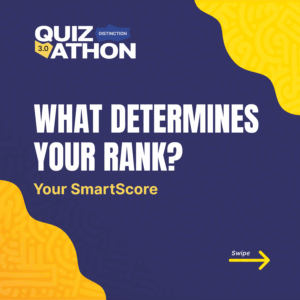How to Supplement Your Computer Science Textbook with Interactive Learning Tools
Computer science is a discipline that blends logic, creativity, and technical skills. Students often rely on a computer science textbook to understand concepts like algorithms, data structures, and programming paradigms. These textbooks lay a strong theoretical foundation. However, they come with limitations that can slow or block deeper learning.
Textbooks primarily promote passive learning. Students read concepts but often don’t apply them immediately. This gap between theory and practice is one of the biggest challenges for CS undergraduates or curious learners who take a course or two in Computer Science. To solve this, interactive learning tools have emerged as powerful supplements.
Interactive learning platforms stand out by transforming learning into an active experience. In this article, we’ll explore why textbooks alone aren’t enough and look at how AI-powered platforms offer real-world, practical benefits. We’ll also show you how to use both tools effectively for maximum results.
Why Computer Science Textbooks Alone Aren’t Enough
Computer science textbooks explain concepts clearly, but they often fail to show students how to put these ideas into action. Reading about loops or recursion doesn’t teach you how to write effective code using them. Without hands-on practice, students struggle to retain what they read. They may understand theories like stack memory or sorting algorithms, but freeze when asked to implement them in assignments or exams.
A core issue is passive learning. Students become receivers of information rather than active problem solvers. Passive reading doesn’t build the muscle memory needed for programming confidence. As a result, even top-performing students can struggle with real coding tasks, debugging, or writing efficient solutions under time pressure.
Another drawback is the lack of instant feedback. When you make a mistake while studying from a book, you may not realize until much later. Sometimes, you might not notice the error at all. This leads to confusion, frustration, or poor coding habits that remain uncorrected.
Motivation also suffers. Textbooks don’t provide immediate rewards, visual progress tracking, or encouragement. Without this feedback or validation, students can lose interest, especially as concepts become harder, such as data abstraction, algorithm efficiency, or memory management.
Textbooks rarely simulate real-world programming challenges. They use clean, ideal examples that don’t reflect the messy, complex scenarios faced in practical software development, coding interviews, or industry projects. Students need exposure to debugging errors, handling incomplete requirements, and writing scalable code—skills that go beyond textbook explanations.
Using Interactive Learning Tools For Programming Fundamentals
Interactive platforms bring programming fundamentals to life. They allow students to experiment and learn through doing. This shifts the learner’s role from passive observer to active participant.
Hands-on coding is one of the biggest benefits. Students can apply a new idea immediately after learning it. Whether it’s through solving a challenge or tweaking code snippets, this active learning reinforces understanding. Practice makes concepts more tangible and easier to recall.
These platforms also provide real-time feedback. Mistakes are highlighted instantly. Hints guide learners toward the correct solution without giving everything away. This feedback loop accelerates learning and boosts confidence.
Students can learn at their own pace, making these platforms ideal for self-paced learning. They can revisit difficult topics, skip ahead, or pause when needed. This flexibility helps reduce stress and accommodates different learning styles.
Real-world problem scenarios are another advantage. Instead of just theory, students deal with challenges that simulate industry problems. This builds practical skills and helps them see the relevance of what they’re learning.
Introducing Distinction, Your AI-Powered Tutor for Programming Languages
Distinction stands out for its focus on interactive learning. It offers curated learning paths that align with university-level CS curricula. Each path includes progressively challenging exercises that ensure a deep understanding of core topics.
Unlike some tools that just test your ability to recall, Distinction requires students to build actual projects. These projects go beyond code snippets. They involve writing full solutions, debugging, and optimization—skills that matter in real jobs.
The platform balances guidance and independence. Students aren’t left to sink or swim. Step-by-step tutorials help them through the basics. But as they grow more confident, they can tackle open-ended problems that require creative thinking.
Distinction also includes gamification elements. Badges, progress meters, and streak counters motivate users to stay engaged. This turns learning into a game and encourages consistency. You get to track your own improvement, which boosts morale and keeps you going.
Another key feature is the use of visual aids and interactive content. Complex topics like recursion, memory management, or algorithm efficiency become easier to grasp. These tools make abstract concepts feel concrete.
Distinction doesn’t just teach you to code – it helps you think like a programmer. It builds problem-solving confidence and practical experience. You get instant feedback to correct mistakes in real time. There’s also a strong community aspect, where you can discuss challenges with peers, share solutions, and learn from different approaches. This combination of AI guidance, community learning, and hands-on projects ensures you’re fully prepared for internships, job assessments, and real-world development tasks ahead.
How to Use Distinction Alongside Your CS Textbook
To get the most out of both tools, start by aligning your textbook and Distinction modules. If your textbook covers sorting algorithms in chapter five, find the related module on Distinction. This syncs theoretical learning with practical application.
Once you study a topic, reinforce it through immediate practice. Read about recursion, then solve recursive problems on Distinction. Doing this right away helps solidify your understanding. You move from knowing about recursion to actually doing it.
Use quizzes and checkpoints on Distinction to test your understanding. These tools help you gauge your progress. If you miss questions, go back and review. This creates a feedback loop that guides your learning process.
When you hit a challenging topic in your textbook, don’t just reread it—explore it interactively. Visual tools and hands-on tasks on Distinction can offer clarity. This dual approach helps tackle even the toughest subjects.
Keep notes that connect textbook theory to platform practice. For every chapter, write down which modules you completed. Note what you found easy or hard. These notes will help during revision and exam preparation.
Tips for Getting the Most Out of Both Resources
Set a consistent schedule that includes both reading and interactive work. For example, read textbook chapters during the week and practice with Distinction on weekends. A routine helps reinforce learning and avoid cramming.
Join online forums or study groups to exchange ideas and get help. Discussing concepts with peers deepens understanding. Platforms like Distinction often include built-in community features. Use them to connect with others and learn collaboratively.
Maintain a study journal or digital log. Record what you learned each day, challenges faced, and new concepts discovered. Reflecting helps you stay organized and track improvement over time.
Set mini-goals and reward yourself when you reach them. For example, finish a module, then take a break or treat yourself. This adds structure and motivation to your learning journey.
Use Distinction’s progress tracking features to evaluate growth. Watch how your skills evolve over time. Use analytics to see which areas need more focus. This turns data into insight and helps you study smarter.
Finally, don’t rush. Computer science takes time and effort. Be patient with yourself, and use every tool available—especially those that make learning enjoyable and effective.
Conclusion
Textbooks are important in computer science education. They offer structure, depth, and detail. But they alone aren’t enough to produce skilled, confident programmers. Interactive learning platforms like Distinction fill in the gaps.
Distinction brings textbook theory into the real world. It makes learning active, visual, and engaging. By combining both approaches, you gain a deeper understanding and practical experience.
Using Distinction alongside your CS textbook will make your study sessions more productive. You’ll learn more, remember more, and enjoy the process. It’s not just about passing exams—it’s about truly mastering computer science.
If you’re an undergraduate CS student, now is the time to explore new ways to learn. Make Distinction your go-to platform for coding practice, project development, and self-assessment.
Your computer science textbook gives you the map. Distinction helps you walk the path.
Start your interactive learning journey today. Learn smarter. Code better. Go further with Distinction.
Ready to Level Up?
Check out Distinction Pricing and discover how easy it is to unlock your full academic potential.
Keep pushing, keep winning — we’re with you all the way.




